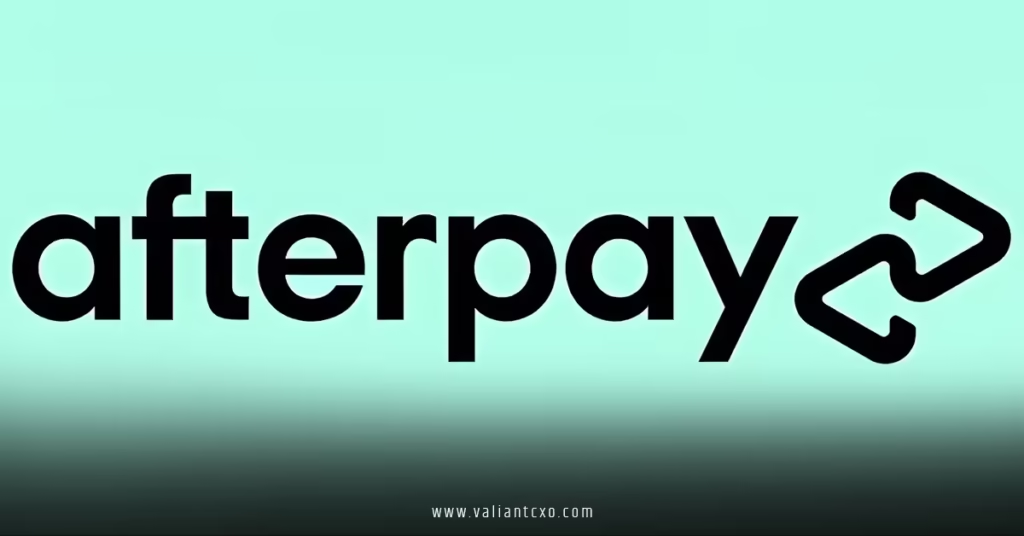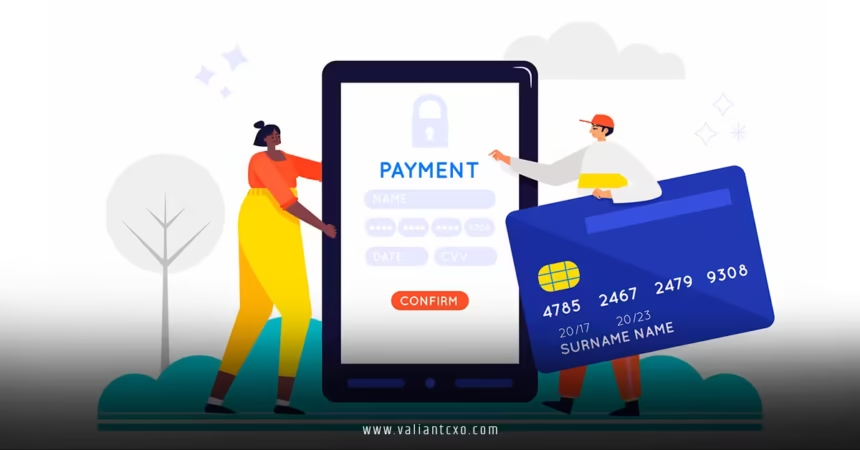Afterpay integration for WooCommerce stores is more than just a buzzword—it’s a game-changer that lets your customers snag those dream items without the wallet shock. Picture this: a shopper eyes a pair of sneakers on your site, hesitates at checkout, then sees “Pay in 4 interest-free installments.” Boom—cart abandonment vanishes, and your sales ping upward. If you’re running a WooCommerce-powered online shop, diving into Afterpay could be the secret sauce to lure in millennials and Gen Z, who crave that buy-now-pay-later vibe. In this guide, I’ll walk you through everything from the basics to pro tips, all in plain English, because who has time for tech jargon? Let’s roll up our sleeves and get your store Afterpay-ready.
What Exactly Is Afterpay Integration for WooCommerce Stores?
Ever felt like your checkout page is a boring monologue? Afterpay integration for WooCommerce stores flips the script, turning it into an engaging conversation with your buyers. At its core, Afterpay is a buy-now-pay-later service that splits purchases into four interest-free payments over six weeks—or even monthly options in the US. It’s not some shady loan; nope, it’s straightforward, no-hidden-fees magic designed for everyday shoppers.
But why pair it with WooCommerce? WooCommerce, that powerhouse WordPress plugin powering over 30% of online stores, thrives on flexibility. Integrating Afterpay means embedding this payment option seamlessly into your checkout flow. Customers pick it like any other gateway—credit card, PayPal, you name it—and voilà, they’re off to Afterpay’s secure portal to confirm. You? You get paid upfront, minus a small merchant fee, while Afterpay handles the collections and fraud risks. It’s like having a trusty sidekick who fronts the cash and deals with the drama.
Think of it as a bridge between impulse buys and budget-friendly bliss. For WooCommerce stores, this integration isn’t plug-and-play fluff; it’s backed by a dedicated plugin from Afterpay themselves, ensuring it syncs with your inventory, taxes, and shipping like a well-oiled machine. No more mismatched orders or payment glitches— just smooth sailing.
The Evolution of Afterpay: From Aussie Roots to Global WooCommerce Staple
Afterpay kicked off in Australia back in 2014, but fast-forward to today, and it’s a beast serving millions across the US, Canada, New Zealand, and beyond. For WooCommerce stores, the integration hit the scene around 2018, evolving with updates that now support everything from express checkouts to cross-border sales. Remember when BNPL (buy now, pay later) was niche? Now, it’s the norm, with Afterpay boasting 24 million active users worldwide as of late 2023. WooCommerce users love how it taps into that Gen Z crowd—those digital natives who ditch traditional cards for apps that fit their lifestyle.
What sets Afterpay integration for WooCommerce stores apart? It’s the AI smarts. Their risk engine approves over 90% of transactions on the spot, minimizing your exposure to bad eggs. And for you, the store owner? Daily settlement reports land in your inbox, making reconciliation a breeze. It’s not just payments; it’s peace of mind wrapped in pixels.
Why Bother with Afterpay Integration for WooCommerce Stores? The Real Perks
Okay, let’s cut to the chase: why should you, a busy WooCommerce hustler, invest time in Afterpay integration for WooCommerce stores? Simple—it’s a sales booster disguised as customer kindness. In a world where cart abandonment hovers at 70%, offering flexible payments is like handing out free coffee at a marathon: it keeps folks crossing the finish line.
Skyrocketing Conversions and Bigger Baskets
Here’s the juicy bit: stores adding Afterpay see average order values jump by 40%. Why? Shoppers think, “Hey, $100 dress? That’s only $25 today!” Suddenly, they’re tossing in accessories, convinced it’s “affordable.” I’ve chatted with store owners who swear by this— one fashion boutique in LA reported a 25% sales spike in the first month post-integration. Rhetorical question: Wouldn’t you want that kind of lift without slashing prices?
For WooCommerce stores, the integration shines by displaying installment breakdowns right on product pages and carts. That little “Pay with Afterpay” badge? It’s a psychological nudge, whispering “Go ahead, treat yourself.” Result? Higher conversions, especially for mid-ticket items like electronics or apparel, where hesitation reigns supreme.
Attracting the Young Guns: Millennials and Gen Z Love It
Who hasn’t scrolled TikTok and seen influencers flaunt Afterpay hauls? This integration for WooCommerce stores is catnip for under-35s, who make up 60% of BNPL users. If your shop targets trendy vibes—think sustainable fashion or gadget geekery—Afterpay opens doors to a demographic that’s loyal but picky about payments.
Imagine your store as a party: Without Afterpay, it’s invite-only for credit-card crowd. With it? The cool kids show up, shop more, and return often. Studies show repeat purchase rates climb 20-30% for Afterpay users. Plus, it’s inclusive—folks building credit or dodging debt traps can join the fun without judgment.
Risk-Free for You, Delightful for Them
Worried about fraud? Afterpay’s got your back—they assume all that risk, approving deals via machine learning wizardry. You get funds in days, not weeks, and automatic refunds sync back to WooCommerce orders. It’s like outsourcing your collections department to a pro team. And customers? Zero interest if they pay on time, building trust that keeps them coming back.
In short, Afterpay integration for WooCommerce stores isn’t an expense; it’s an investment. Merchants report 15-20% revenue uplifts, with minimal setup hassle. If you’re still on the fence, ask yourself: What’s the cost of not giving customers what they want?
Step-by-Step: Setting Up Afterpay Integration for WooCommerce Stores
Alright, enough hype—let’s get hands-on. Integrating Afterpay with your WooCommerce store is straightforward, like assembling IKEA furniture minus the missing screws. You’ll need a merchant account with Afterpay first (head to their site and apply—it’s quick if you meet the basics like a solid sales history). Once approved, grab your Merchant ID and Secret Key. Ready? Here’s the blueprint.
Prerequisites for Smooth Afterpay Integration for WooCommerce Stores
Before diving in, check your setup:
- WordPress 5.8+ and WooCommerce 6.0+ (tested up to the latest versions).
- PHP 7.4 or higher.
- Supported countries: US, Australia, Canada, New Zealand.
- A staging site for testing—don’t skip this; it’s your safety net.
Pro tip: If you’re using currency switchers or bundles plugins, the Afterpay plugin plays nice, but test thoroughly. Now, onto the magic.
Installing the Plugin: Your First Move
Fire up your WordPress dashboard—feels familiar, right?
- Head to Plugins > Add New.
- Search “Afterpay Gateway for WooCommerce.”
- Spot the official one by Afterpay? Hit Install Now, then Activate.
Boom—plugin’s live. It’s free, no hidden costs beyond Afterpay’s merchant fees (typically 4-6% per transaction, but check your agreement).
Configuring Settings: Tailor It to Your Store
Now, the fun part: customization.
- Navigate to WooCommerce > Settings > Payments.
- Find Afterpay in the list and click Manage or Set Up.
- Toggle Enable Afterpay on.
- Paste in your Merchant ID and Secret Key—save changes.
- Tweak display options: Show installment calcs on product pages? Cart? Checkout? Crank ’em all up for max visibility.
- Set limits: Afterpay caps at $2,000-ish per order, but you can restrict by category (e.g., no BNPL on high-end jewelry).
For express checkout—a gem that skips fields and boosts conversions by 20%—enable it under advanced settings. It pre-fills details via Afterpay’s app, making buying feel like a breeze. Test a dummy order: Add items, select Afterpay, and watch the redirect magic.
Advanced Tweaks for Pro-Level Afterpay Integration for WooCommerce Stores
Want to go next-level? Use shortcodes like [afterpay_logo] to slap badges anywhere—sidebars, footers. For variable products, the plugin auto-calcs the lowest installment, keeping things transparent. Cross-border? Enable it for international sales; customers pay local, you get your currency.
Hooks and filters let devs customize further—think excluding virtual products or integrating with themes like Astra. If you’re non-technical, stick to the basics; it covers 90% of needs.

Maximizing ROI: Best Practices for Afterpay Integration for WooCommerce Stores
Integration done? Great—now optimize like a boss. Afterpay integration for WooCommerce stores thrives on promotion and smarts.
Marketing Your New Payment Perk
Don’t bury it—shout it! Add banners: “Shop Now, Pay Later with Afterpay!” Email blasts to subscribers: “Unlock flexible payments today.” Social proof works wonders; share user stories of stress-free splurges.
Pair with upsells: “Add this scarf for just $10 more—split over time?” Watch baskets balloon. Track via Google Analytics—tag Afterpay checkouts to measure uplift.
Handling Refunds and Disputes Seamlessly
Refunds? Auto-processed back to Afterpay, syncing to WooCommerce. For disputes, their portal has your back with order links. Keep customer service looped—quick responses build loyalty.
Monitoring Performance: Dashboards and Insights
Dive into Afterpay’s Business Hub for analytics: Approval rates, top products, repeat buyers. WooCommerce reports complement this—spot trends like “Afterpay drives 30% of apparel sales.” Adjust inventory accordingly; stock what flies off shelves.
Analogy time: Think of your store as a garden. Afterpay’s the fertilizer—nurture it with data, and blooms (sales) explode.
Common Pitfalls and Fixes in Afterpay Integration for WooCommerce Stores
Nobody’s perfect, and integrations can hiccup. Here’s the lowdown on troubleshooting Afterpay integration for WooCommerce stores.
Top Glitches and Quick Fixes
- Slow Loading? Scripts bogging your site? Enable “load only on Woo pages” in settings—shaves seconds off load times.
- Declined Transactions: Check API keys or order totals exceeding limits. Test in sandbox mode first.
- Compatibility Clashes: With plugins like Woo Subscriptions? Update everything; Afterpay supports HPOS and blocks now.
- Mobile Woes: Ensure responsive themes—Afterpay’s modals shine on phones, where 50% of traffic lurks.
If stuck, hit their help center—solid docs await. Or, for deeper dives, check the official Afterpay plugin on WooCommerce Marketplace.
Real-World Wins: Case Studies on Afterpay Integration for WooCommerce Stores
Let’s get inspired. Take Gap Inc.—their CDTO raved about reaching budget-conscious youth, with sales up 15% post-integration. Closer to home, a Kiwi fashion WooCommerce store saw AOV rise 35%, crediting Afterpay’s badges for impulse buys.
Another gem: A US gadget shop integrated via the Afterpay Gateway for WooCommerce plugin, netting 22% more conversions in Q1. These aren’t flukes; BNPL routinely delivers 10-40% lifts across e-comm. Your store could be next—why not experiment?
Scaling Up: Future-Proofing Your Afterpay Integration for WooCommerce Stores
As e-comm evolves, so does Afterpay. Expect deeper AI for personalization, maybe VR try-ons with split pays. For WooCommerce stores, updates like vector assets and block support keep you ahead.
Stay sharp: Monitor Afterpay’s changelog, join their merchant community. Integrate with tools like Klaviyo for targeted “Pay later” emails. The future? Seamless, global, and oh-so-profitable.
Conclusion: Time to Integrate Afterpay and Watch Your WooCommerce Store Thrive
Whew— we’ve covered the gamut: from decoding Afterpay integration for WooCommerce stores to nailing setup, perks, and pitfalls. Key takeaways? It boosts sales, delights customers, and minimizes risks, all with minimal fuss. If you’re tired of stagnant carts and craving that growth spurt, don’t wait—sign up, install, and promote. Your bottom line (and happy shoppers) will thank you. What’s stopping you? Dive in today and transform your store into a BNPL powerhouse. You’ve got this!
Frequently Asked Questions (FAQs)
1. How long does Afterpay integration for WooCommerce stores take to set up?
Typically 30-60 minutes if you have your merchant account ready. Install the plugin, input keys, test an order—done! For complex stores, budget a day for tweaks.
2. What are the fees for Afterpay integration for WooCommerce stores?
Merchants pay 4-6% per transaction (varies by region), but you get paid upfront. No setup fees, and it’s often offset by higher sales volumes.
3. Can Afterpay integration for WooCommerce stores handle international sales?
Absolutely—cross-border trade supports AUD, CAD, USD, NZD. Customers pay local; you settle in yours. Perfect for global WooCommerce ambitions.
4. Is Afterpay integration for WooCommerce stores secure for my customers?
100%—Afterpay handles fraud risk with AI, and PCI compliance is baked in. No card details touch your server.
5. What if a customer misses a payment in Afterpay integration for WooCommerce stores?
Afterpay manages reminders and collections—you’re out of it. Refunds sync automatically if they cancel early.
Read More:valiantcxo.com


